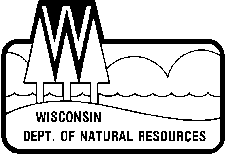
|
ASHLEY FURNITURE INDUSTRIES, INC.
Distillation and Reuse of Waste
Solvent |
| Standard Industrial Classification
(SIC) |
Manufacturing wood household furniture,
upholstery/2511, 2512. |
| Type of Waste |
Methyl Ethyl Ketone (MEK) and Acetone |
| Strategy |
Recycle and reuse spent solvents |
| Company Background |
Incorporated in 1945, Ashley Furniture
Industries, Inc. began operations in Arcadia, Wisconsin in 1970. It has grown to become
the largest privately held company in the industry and the tenth largest furniture
manufacturer in the US. The company operates over two million square feet of manufacturing
and warehouse space and employs over 2000 people in western Wisconsin. Ashley Furniture
manufactures home furniture and has recently expanded into upholstery. Its markets include
the entire US and 60 countries. |
| Original Process |
Solvents were used to clean and flush spray
application equipment between color changes and for thin coatings. Only new solvent was
used. The collected spent solvent was managed as hazardous waste. |
| Motivation |
Two high-concentration solvent waste
streams presented an opportunity to reduce hazardous waste volume, disposal costs and
solvent purchase costs. Approximately 200 drums of potentially recyclable waste were being
generated per year. The project goals were environmental improvements and reduced costs. |
| Pollution Prevention Process |
A feasibility study was conducted to
evaluate the use of recycled solvent, permit requirements and payback period. Several
distillation equipment dealers were contacted for information regarding potential models.
Cost, capacity and ease of operation were investigated for comparison. The results
confirmed that this was a very viable project. The still that was selected has a batch
capacity of 55 gallons with a cycle time of six to ten hours. It was sized for substantial
operational growth. |
| Level of Commercialization |
All equipment is commercially available |
| Stage of Development |
The process is installed and in operation. |
| Material/Energy Balance |
Original Process
Feedstock
3,800 gallons/month new solventWaste
1,500 gallons/month hazardous waste
Disposal
Sent offsite for energy recovery
Energy Use
None
Pollution Prevention Process
Feedstock
(26% reduction) 2,800 gallons/month new solvent
Waste
(80% reduction) 550 gallons/month hazardous waste
Disposal
Sent offsite for energy recovery or incineration
Energy Use
Electricity for heating coils and cooling water for condenser ($98/month increase)
Waste Reduction
(63% reduction) 950 gallons/month |
| Economics |
Capital Costs
Purchase and installation of batch solvent distiller, cooler for condenser water, pump and
plumbing and electrical hookups.
Equipment |
Cost |
| Solvent Reclaimer |
$17,885 |
| Water Cooler |
$1,157 |
| Water Pump |
$62 |
| Transportation |
$943 |
| Plumbing Materials |
$591 |
| Electrical Materials |
$644 |
| Installation Labor |
$1,800 |
| Total |
$23,082 |
Operation/Maintenance Costs
| |
Cost/Month |
| Utilities |
$98 |
| Labor |
$495 |
| Supplies |
$16 |
| Total Cost |
$609 |
Payback Period
Type of Cost |
Net $ Saved/Mo.,
New System Vs. Old |
| Solvent Purchases |
$3,035 |
| Waste Disposal Fees |
1,201 |
| Operational Costs |
-609 |
| Total savings/mo. |
$3,627 |
The overall cost of project is $23,082, and the savings
are $3,627 per month; therefore, the payback period of the project is 6.4 months. |
| Benefits |
The predicted benefits of reduced waste,
less solvent use, and a quick payback, have been realized. New solvent use has decreased
by over 900 gallons per month. Fifteen fewer drums of hazardous waste are being generated
per month. The process has also encouraged more effective methods for collecting spent
solvent. |
| Obstacles |
An early concern was that spent solvents
could absorb water and other contaminants which could compromise quality when used to thin
coatings or flush equipment. Upon testing the recycled solvent, coating suppliers gave
approval for use in flushing. Projections indicated that all recycled material would be
consumed by cleaning and flushing operations. |
| Technology Transfer |
This process has been easy to install and
operate. A water cooler was added to allow cooling water to be recirculated and reused. It
is capable of recycling a wide variety of industrial solvents with minimal operator
attention. Ashley is willing to share information regarding this process with others. |
| Company Address |
Ashley Furniture Industries, Inc.
Hwy 121 West
Whitehall, Wisconsin 54773 |
| Contact Person |
David Ehlert, Environmental Manager
Phone: 608/323-3377
Fax: 608/323-7123 |
| Pollution Prevention Resources |
Free, On-site Technical Assistance
University of Wisconsin Extension
Solid and Hazardous Waste Education Center
Milwaukee area: 414/475-2845
Remainder of state: 608/262-0385Pollution Prevention
Information Clearinghouse
Wisconsin Department of Natural Resources
Hazardous Waste Minimization Program
608/264-8852, 608/267-9523 or 608/267-3763 |
 |
Bureau of Cooperative Environmental Assistance
Wisconsin Department of Natural Resources
P.O. Box 7921
Madison, WI 53707
608/267-9700
PUBL TS-059 |
|

